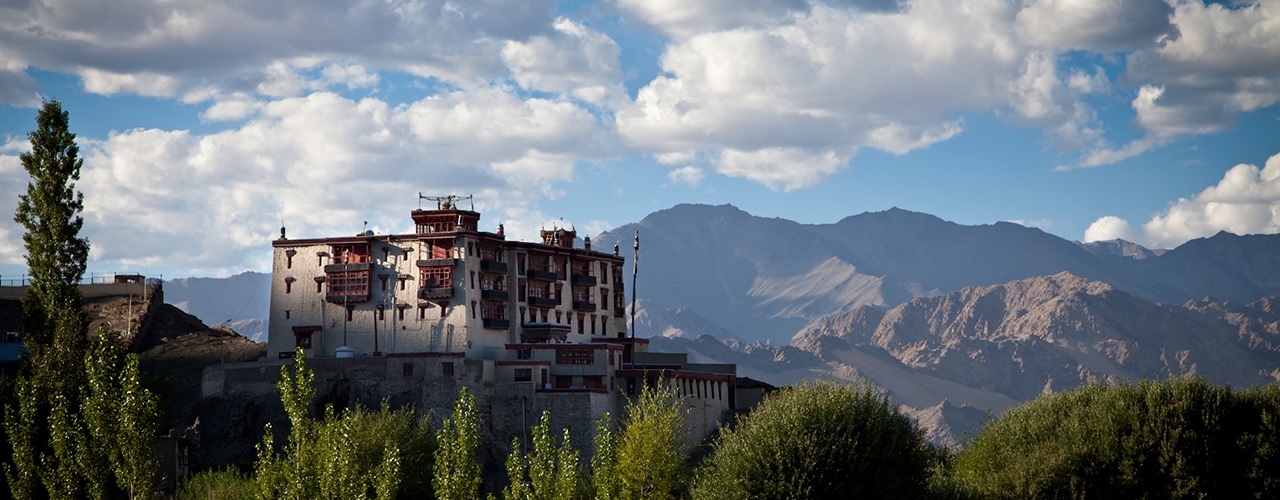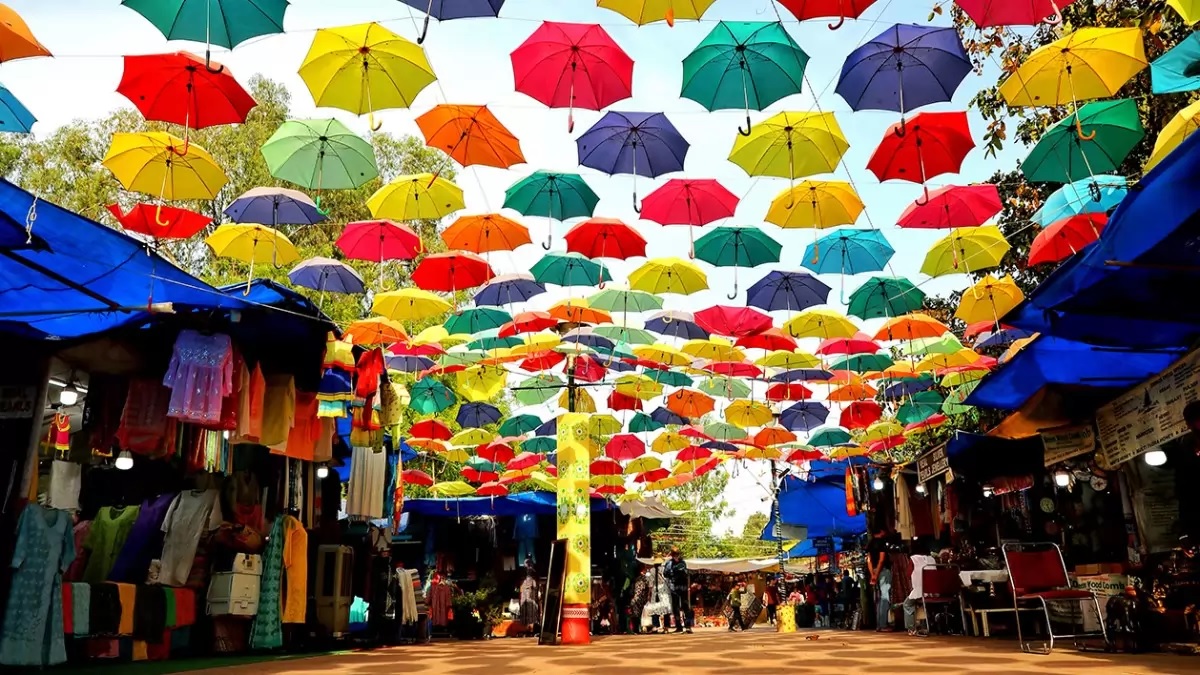Best trip to Ladakh, An ancient Buddhist kingdom surrounded by arid and inaccessible mountains. Ladakh is a succession of surprising landscapes: gompas perched on rocky spurs, imposing peaks, and hidden villages at high altitudes. Here Buddhist culture finds one of its greatest examples: the region is dotted with ancient monasteries, whitewashed stupas, and colorful prayer flags fluttering in the wind. It is impossible to come here and not visit one of the numerous gompas. But which ones to choose? During my last trip, I visited ten monasteries which I will show you in this post.
Shey Gompa (approx. 15 km from Leh)
Shey was once the old capital of Upper Ladakh. When the Dogras of Jammu invaded Ladakh in 1842, the Namgyal royal family abandoned the Royal Palace and fled to Stok, on the opposite side of the Indus River, where they established their new permanent residence. In Shey, you will come across the Naropa Royal Palace, a nearly empty three-story building that houses the 12-meter-tall statue of Sakyamuni Buddha. The walls next to the Buddha show frescoes of the 16 Arhats (saints who have achieved Nirvana), while the one behind the images of the Buddha’s two main disciples, Sariputra and Maudgalyayana.
Thiksey Gompa (approx. 19 km from Leh)
The Thiksey Gompa in best trip to Ladakh is one of the largest monasteries in Ladakh, a monastic village spread over 12 levels which also includes a school, a hotel, a restaurant, and some shops. Vaguely reminiscent of the Potala Palace in Lhasa. The main attraction is the Maitreya Temple which houses a 14-meter-high statue of the Buddha of the Future. The gonkhang which has a small library on the roof is suggestive. There is also a museum that displays, among other objects, an interesting collection of tantric artifacts. The best time to visit the monastery is in the morning when over 50 monks participate in the evocative daily prayer preceded by the sound of trumpets starting at six o’clock. Tourists are welcome and often there are so many that they outnumber the monks themselves.
Basgo Gompa (approx. 42 km from Leh)
The Basgo Gompa is located in the upper part of the village of Basgo in a suggestive position between pinnacles of earth eroded by time and it makes it the best trip to Ladakh. There are three sanctuaries in the monastery dedicated to the figure of Maitreya (Buddha of the future) which contain ancient frescoes, manuscripts, and statues of Maitreya himself. Near the gompa stand the ruins of the citadel and the remains of a palace made of mud bricks in the era when Basgo was one of the capitals of lower Ladakh.
Hemis Gompa (approx. 45 km from Leh)
Hemis Gompa is the largest and richest monastery in Ladakh. Documents attest to its foundation in the 11th century, however its reconstruction took place in 1630 during the Namgyal dynasty. The structure is spread over two main sections: the main temple is located on the left side, the assembly hall on the right. Inside the gompa there are numerous precious objects such as the copper statue of Gautama Buddha as well as gold and silver stupas. An important festival is held here every year between the months of June and July (the exact date depends on the Tibetan calendar) to commemorate the birth anniversary of Guru Padmasambhava
Likir Gompa (approx. 52 km from Leh)
Likir Gompa is a complex dating back largely to the 14th century. A distinctive element is the large golden statue of Maitreya, completed in 1999 and 23 meters high. The monastery has two main prayer halls, the oldest of which, located to the right of the central courtyard, features six rows of seats reserved for lamas and a throne for the honorary head lama of Likir. There is also an interesting museum which houses interesting thangkas (Buddhist paintings on cotton or silk), ceremonial objects and a kangling, a flute made from a human femur.
Alchi Gompa (approx. 60 km from Leh)
The Choskhor Temple of Alchi, one of the greatest expressions of Indo-Tibetan art in Ladakh, was founded in the 11th century by Lotsava Ringchen Zangpo. The complex is made up of four sanctuaries: the Sumrtsek Temple is the first building encountered, a three-storey structure with a carved wooden portico and valuable paintings of small Buddhas, the Vairochana Temple houses mandalas while in the Lotsa Temple the image of founder. Finally, the Manjushri Temple features a statue of Manjushri, the Buddha of Wisdom. Taking photographs of the interior is prohibited in the complex.
Rizong Gompa (approx. 61 km from Leh)
To reach the Rizong Gompa it is necessary to take a dirt road in the village of Uletokpo which climbs for 6 km into an arid gorge crossed by a stream. The monastery was founded in the 19th century and is known by the name of “meditation paradise” also due to the strict rules to which the monks must obey. The complex is mainly developed around three frescoed rooms: the one reserved for assemblies houses the statue of Sakymuni Buddha. A statue of the Buddha is also present in the second room while the third houses a stupa. In one room there is also a sacred relic of the founder of the monastery known by the local name of Sku-Gdung surrounded by numerous frescoes of Dharma-raja and other deities. A couple of kilometers lower, in the greenest area, stands the female wing of the monastery called “Jelichun Nunnery”.
Lamayuru Gompa (approx. 108 km from Leh)
The Lamayuru Gompa stands at the top of the village and is home to a community of around 150 monks. The original structure was made up of five buildings of which only one remains today. The main meeting room is located on the right side of the courtyard and its portico offers visitors a colorful depiction of the Guardians of the four cardinal points.
The fresco on the left instead represents the correct lifestyle for a lama. Also noteworthy are several Buddha statues that embellish the internal and external spaces as well as a small cave where the Indian Buddhist mystic Naropa is supposed to have meditated.
Sumur Gompa (approx. 115 km from Leh)
The most important religious complex in Sumur is the Samstanling Monastery. The gompa, inhabited by around 100 monks, is relatively recent and was founded in 1841 by Lama Tsultim Nima. The entrance is lined with religious flags and the interior rooms are lined with frescoes depicting Buddha and his teachings, Dharamchakra, the four heavenly kings, and other aspects of Buddhism. A large image of Sakyamuni dominates the main hall next to the statues of Maitreya and Mahakala’s best trip to Ladakh.
Diskit Gompa (approx. 117 km from Leh)
The Diskit Gompa is characterized by a series of square Tibetan buildings on the slopes of a rocky spur. The white statue of a six-armed deity located in the back right corner of the gonkhang (temple of guardian deities) clutching a forearm and a human skull is linked to a particular legend.
Tradition wants to trace them back to a Mongol warrior who died in the 14th century in unknown circumstances during the war between the Mongols themselves and the kingdom of Nubra. Nearby stands a huge statue of Chamba (Maytreya-Buddha), 32 meters high, which can be visited with the same ticket to access the Diskit monastery. The statue was inaugurated by the Dalai Lama himself in 2010.
Best Trip to Ladakh, 10 BUDDHIST MONASTERIES TO SEE in Ladakh by Delighted Journey




